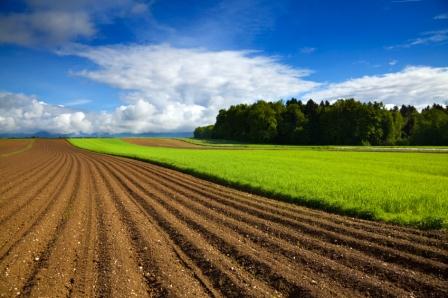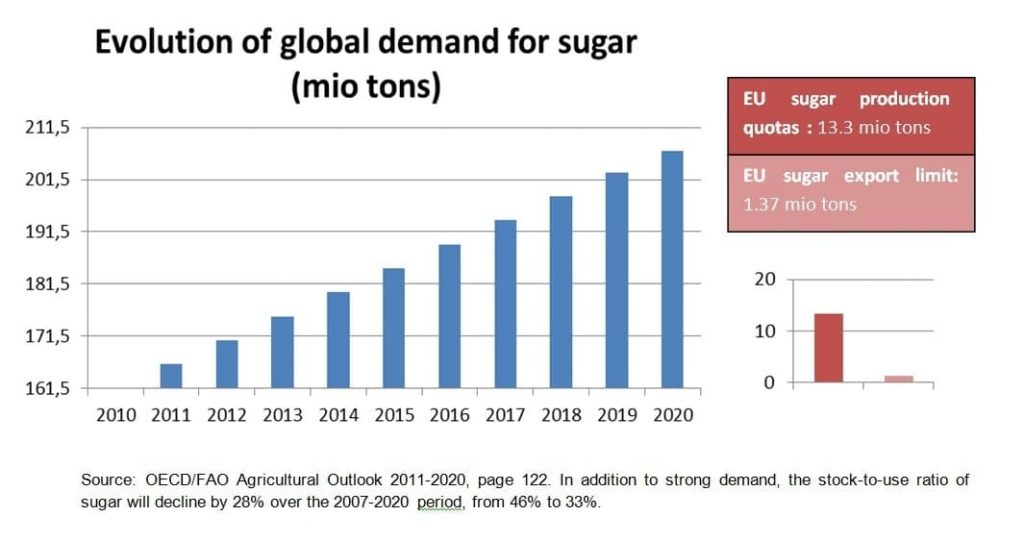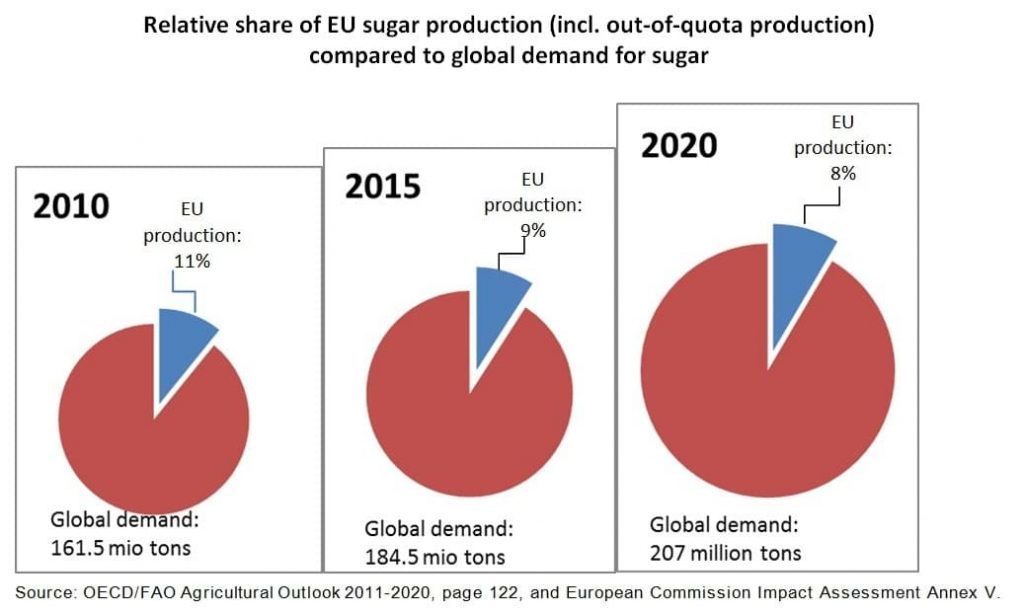2015 is the right time for the abolition of EU production quotas on sugar and isoglucose because:
It will end the outdated, unfair and uncompetitive treatment of isoglucose:
- The current quota regime artificially limits production of isoglucose (cereal-based sugar) to a tiny fraction (4%) of the overall EU sugar and isoglucose consumption market. With a 96%-guaranteed market share, the sugar industry benefits from a quasi-monopoly situation, to the detriment of isoglucose producers and in violation of the fundamental principle of fair competition enshrined in the EU Treaty. It is high time that the outdated, unfair, and discriminatory treatment of isoglucose comes to an end in 2015.[spacer size="20"]
It will stop the problem of EU sugar supply shortages in times of increasing global demand:
- WTO restrictions on sugar exports will remain in place as long as the EU sugar regime exists, preventing EU companies to grasp the benefits from the strong growth in world sugar demand.
- 24 out of 27 EU Member States report problems with the supply of sugar in 2011/12[1]. The exception has now become the rule: out-of-quota sugar is regularly sold on the internal market and sugar is imported through tenders. The EU cannot continue beyond 2015 with this type of ad hoc measure that can be decided at each meeting of the Single CMO Management Committee. In addition, this decision-making process does not provide a transparent and predictable regulatory framework for the European starch industry to invest more and innovate in isoglucose production.
- Only as of the moment the sugar regime ends, the EU starch industry will make investments to enlarge production. As an immediate consequence, the starch industry will be able to contribute to alleviating the supply shortages on the EU sugar market and meet the growing demand from EU food and drink customers. This demand cannot be met today because the isoglucose’s share is artificially limited to 4% of the overall EU sugar and isoglucose consumption market for food applications.[spacer size="20"]
It will unleash production, investment, and growth to the benefit of the entire economy:
- Isoglucose is a European product, almost exclusively based on EU cereals. Because of its liquid form, it does not travel or cannot be stored like sugar, and is therefore mainly delivered to EU customers. EU customers and consumers alike will benefit from a greater European isoglucose production.
- Enabling EU starch companies to optimize their production will encourage these innovative companies to keep investing in the EU: every year, starch companies invest 100 million € in Research & Development to create new applications in diverse fields, including bio-based products.
- Increased competition and a level playing field in the EU sweetener market will create a broader and more diverse choice, and ensure affordable sugar prices for consumers.[spacer size="20"]
EU sugar farmers and the sugar industry are ready for a quota-free environment and will be able to reap benefits from it:
- The European starch industry and the farming community have survived the reform of the cereal regime, the famous “MacSharry reform” agreed in 1992 and fully implemented by 1996. There is volatility both on the EU grain market and on the world sugar market. Farmers already use risk management tools to deal with this volatility – these mechanisms could also work for the EU sugar sector.
- The potato starch regime, including production quotas, was fully abolished in the CAP Health Check of 2008 and will be fully implemented as of 1 July 2012.
- With the end of the milk quotas in 2015, all agricultural markets but one in the EU are subject to market mechanisms. There is no reason why sugar should be the only commodity operating under a quota regime after 2015. The more so because the sugar industry has benefitted from a restructuring phase including a transition period since the last reform in 2006.
- The tradition of contracts between producers and manufacturers in the sugar sector clearly is an advantage in the light of further market orientation. In its CAP proposals, the Commission has foreseen rules on future contracts and safety net mechanisms for farmers to be triggered under exceptional circumstances in order to cushion the extreme volatility of prices.
- Beet growers and sugar manufacturers have considerably increased their competitiveness and beet yields have increased consistently, about 3%[2] per annum. Moreover, the EU foresees high sugar yields for this 2011/12 campaign year: up to 13,8 tons of sugar/hectare in France and 13,9 in The Netherlands, whereas Brazil’s estimate[3] for the same year is 9.8 tons/hectare. Like other EU agricultural sectors, the EU sugar sector has adapted and is ready for a quota-free environment.
- The increased production of isoglucose will increase demand for European cereals.
- Sugar and sugar products remain protected by their import duties at the EU borders.[spacer size="20"]
World food and sugar demand is strongly increasing and will continue to increase.
The EU has a responsibility both to itself and to the rest of the world to play its role in meeting this demand and contributing to global food security. 2015 is the right time for the abolition of production quotas on sugar and isoglucose.
Download the PDF position paper here
April 1, 2012



